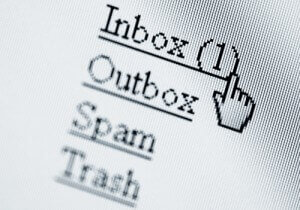- Products

Enjoy a free 30-day trial of our
data validation software.Experience the power of trusted data
solutions today, no credit card required! - Solutions

Enjoy a free 30-day trial of our
data validation software.Experience the power of trusted data
solutions today, no credit card required! - Partners

Enjoy a free 30-day trial of our
data validation software.Experience the power of trusted data
solutions today, no credit card required! - Learn more
- Pricing
- Contact Us
Rinse, lather and repeat: Best practices for email hygiene

There is a correlation between data hygiene and email campaign performance. Why?
Poor list hygiene is a leading cause of email deliverability issues. Internet service providers use the way your list bounces or hits spam traps as a way to help determine if you are a spammer and therefore cause harm to their customers. As an email marketer, it is important to adopt best practices, because you never want to appear spammy and suffer from poor deliverability.
You may be having deliverability issues if you are seeing very high bounce rates or hitting spam traps. In extremely cases, you may be put on a blacklist, preventing all mail you send from being delivered to any domain within a given internet service provider.
If you want to run a successful and legitimate email program, email hygiene must be top-of-mind.
The first way to enable having a good email list is to ensure you are collecting email addresses on a permission basis and are not acquiring lists. List acquisition is one of the top ways your sender reputation can be harmed because these lists are often riddled with outdated and invalid email addresses.
Another key best practice is to ensure all email addresses you collect directly from the subscriber are valid and deliverable (from the moment they are captured and over time). Email validation services can be used to detect error-ridden, invalid and undeliverable email addresses.
To get started, here are a few tips and approaches on email cleansing:
- Clean old email lists: Keep email lists up-to-date. Validate your old email lists to be sure they don’t contain any inactive or bad email addresses. This should be done prior to a re-engagement or re-activation campaign.
- Validate emails at the point of entry: Real-time email verification instantly determines if an email address is valid, accurate and actionable. It should be utilized on the front-end across every channel that collects email addresses, such as web forms and landing pages, point of sale systems, and call centers. Always validate email addresses for recent opt-ins before sending a welcome message. This ensures harmful and undeliverable email addresses never enter into your systems.
- Remove bounced emails: 2% of all contact data goes bad every month. Why do email addresses go bad? The email channel is very dynamic with accounts constantly being abandoned, blocked or changed. To account for these changes, be sure to remove any hard bounced emails from your list permanently.
Following these best practices is critical to achieving success with your email program, as well as mitigating the risks associated with deliverability problems.


